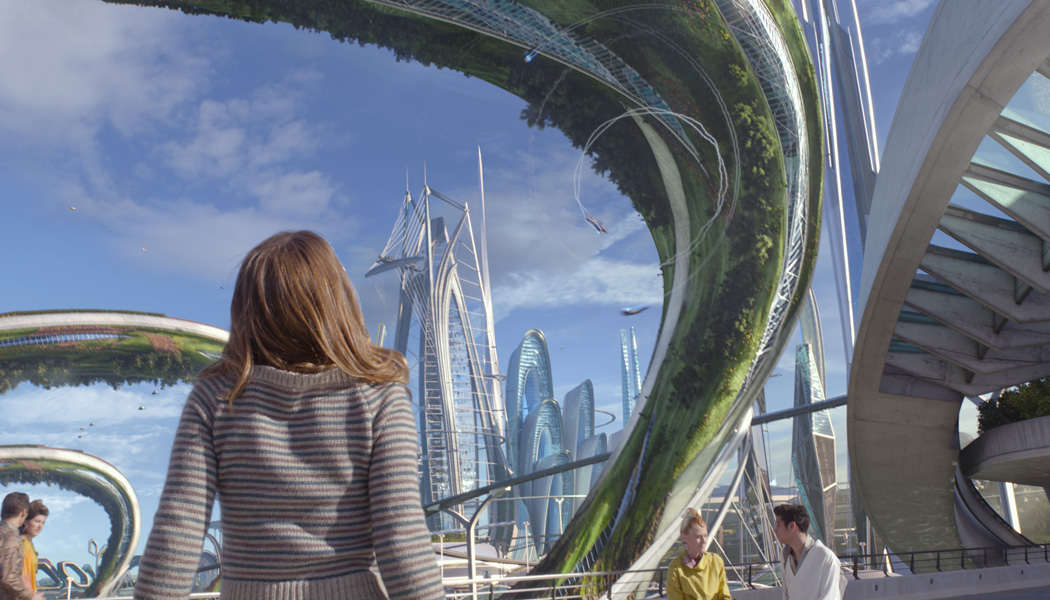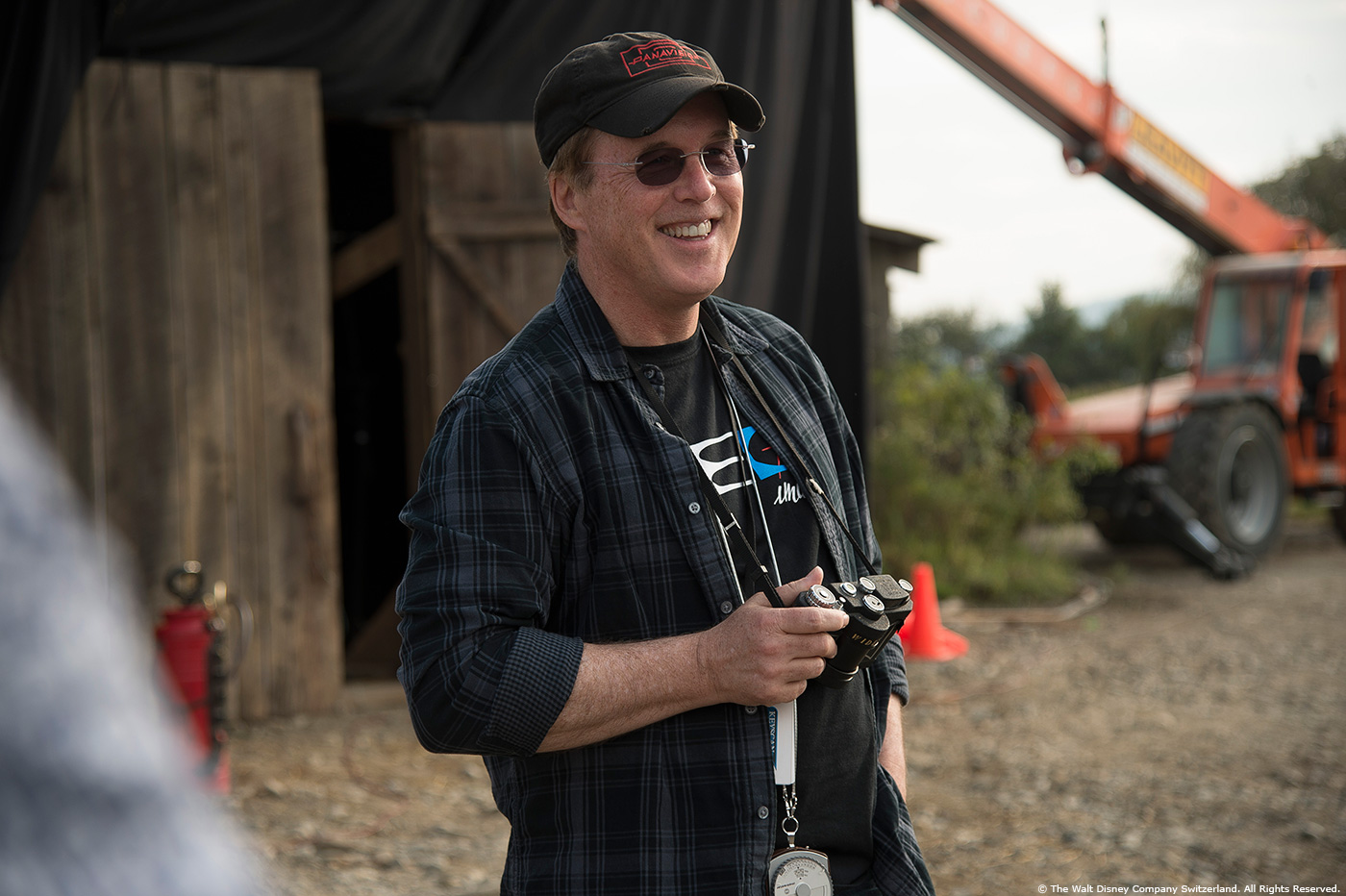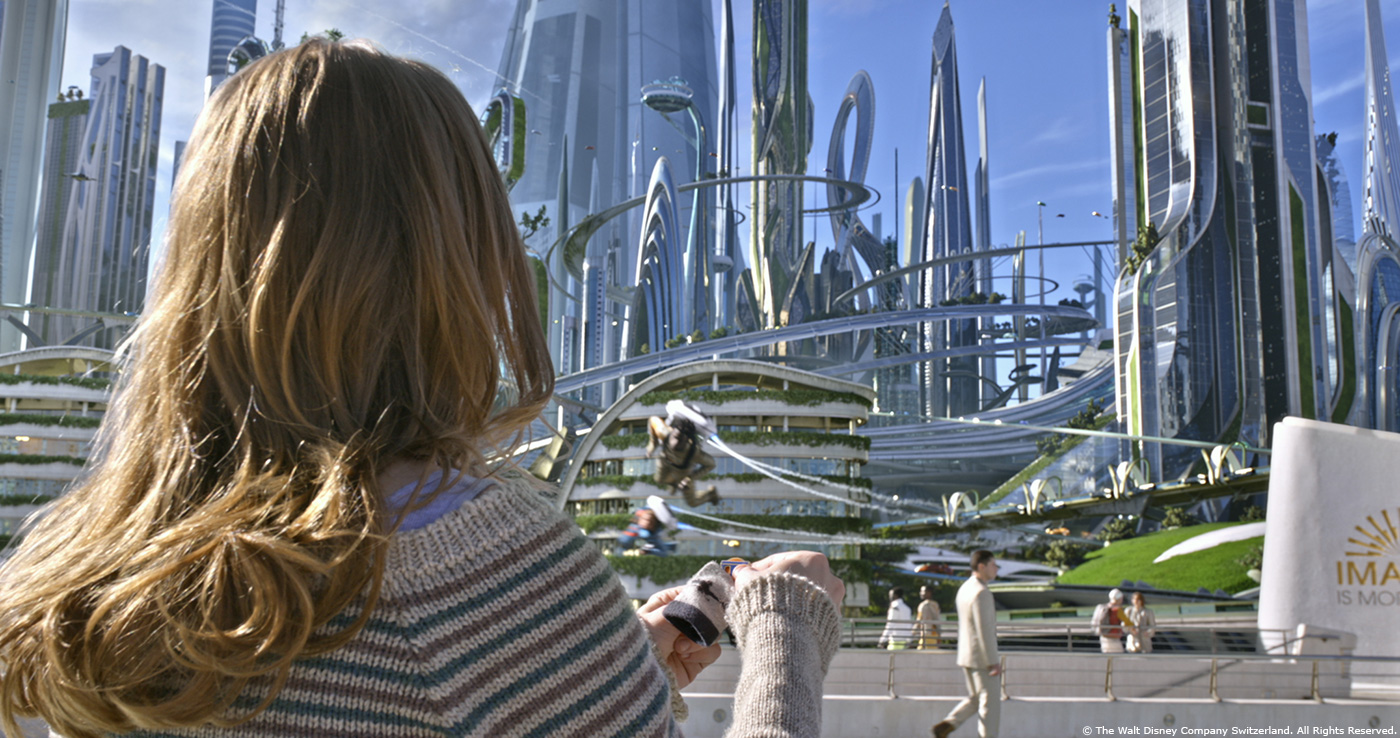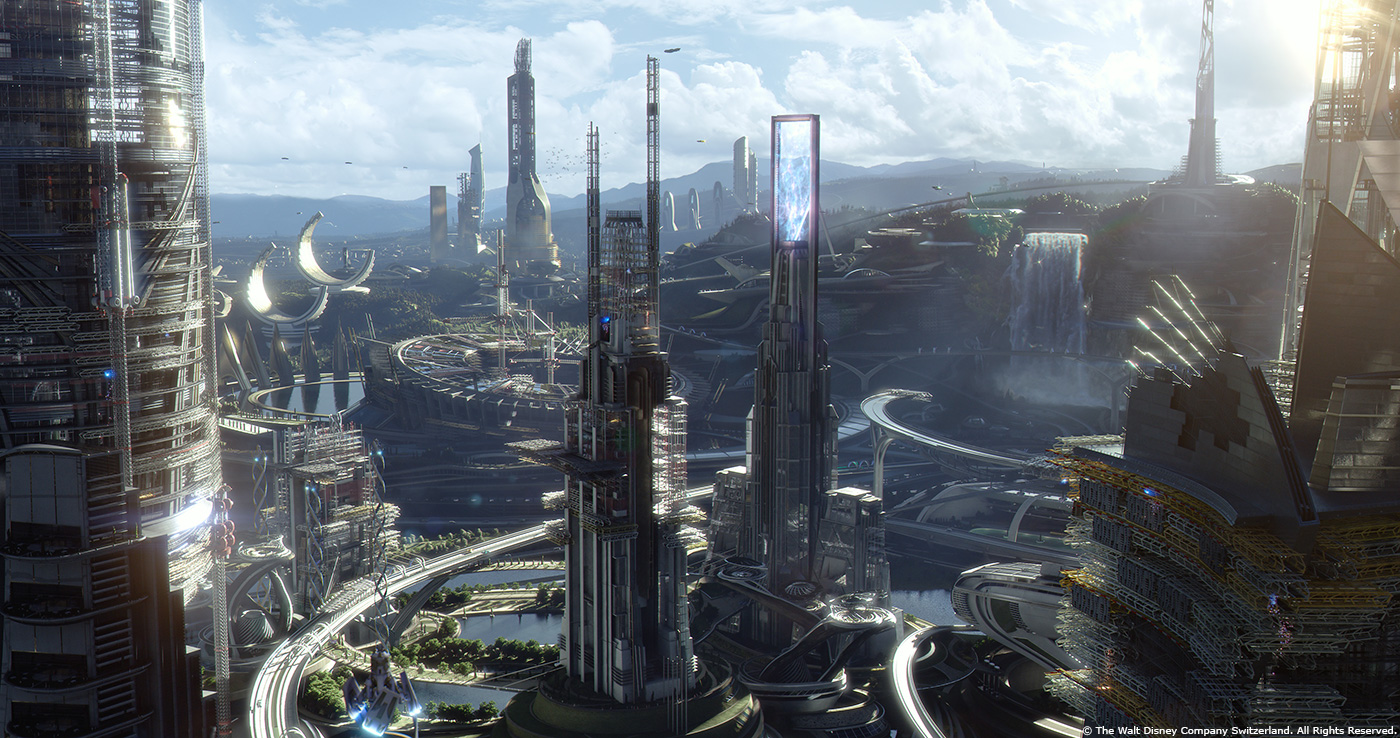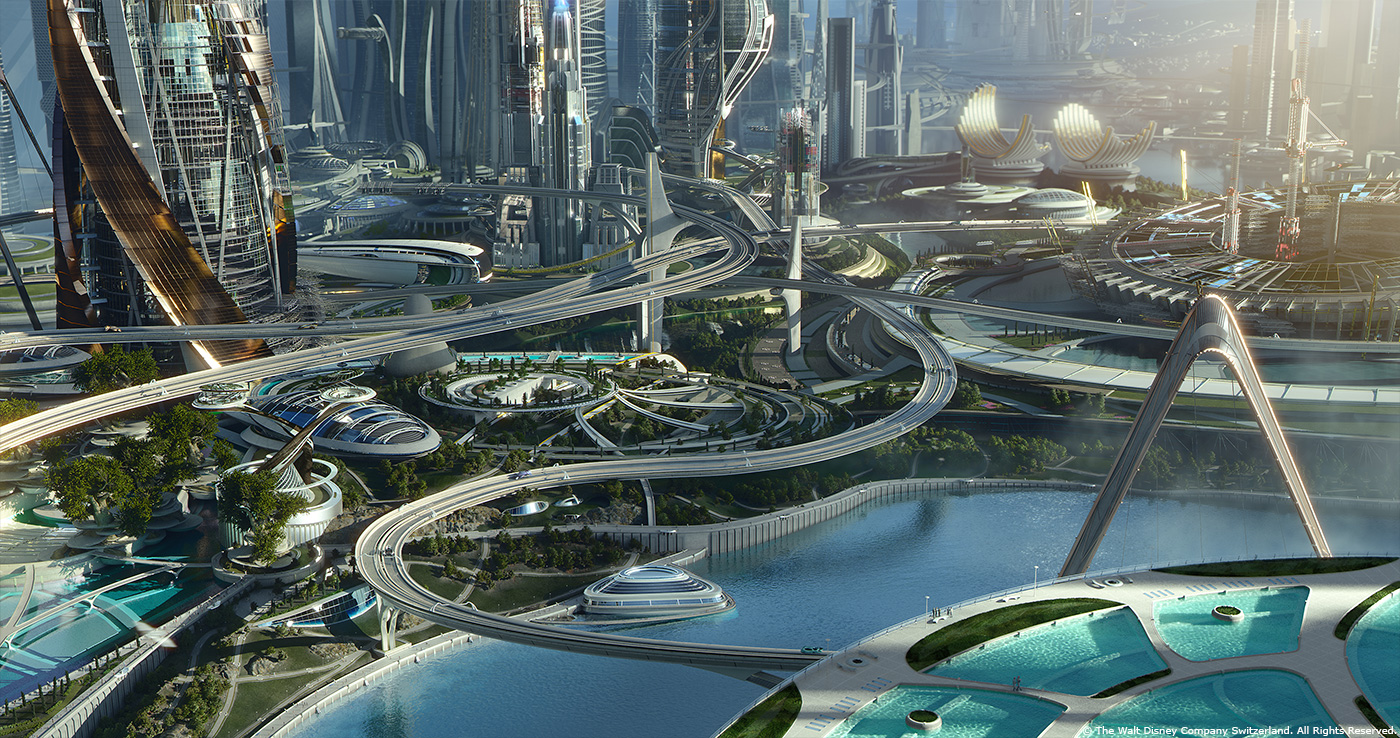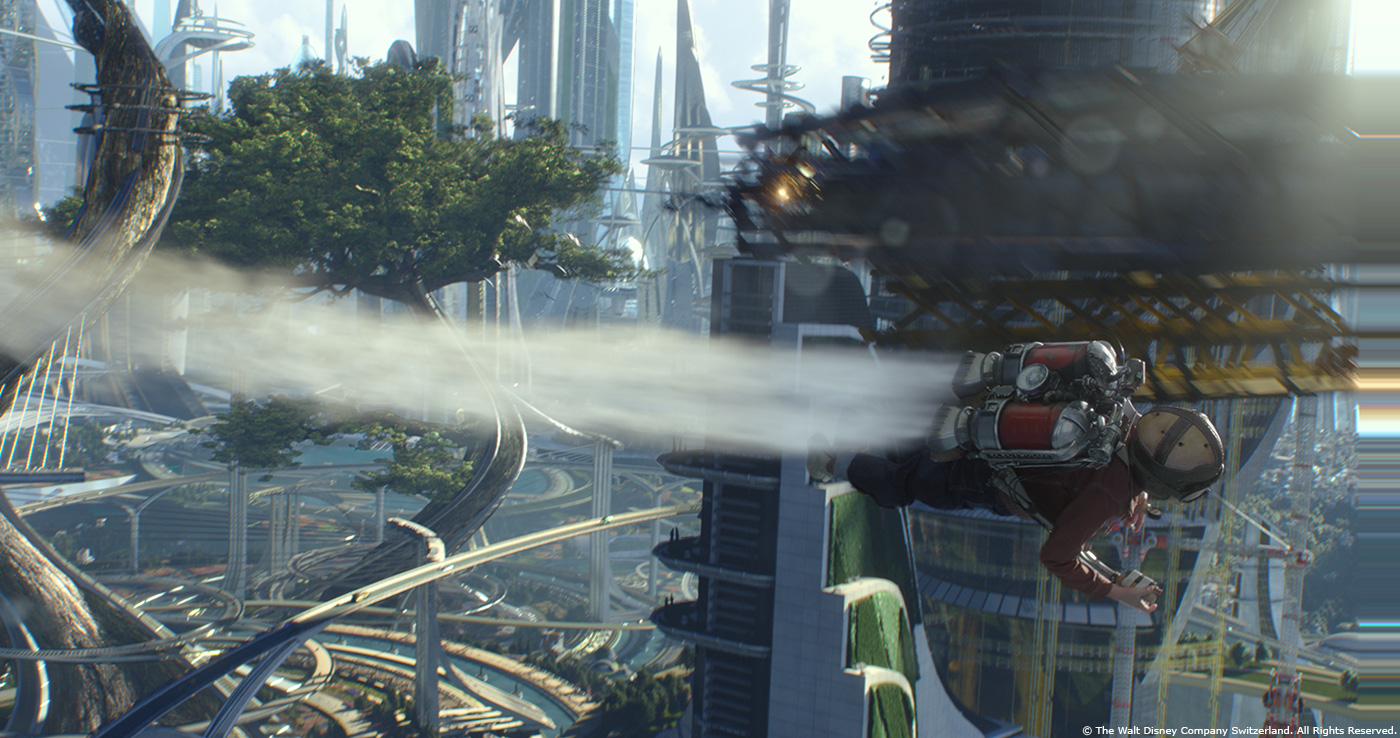Craig Hammack begins his career in visual effects at ILM in 1997. He works on projects such as TITANIC, STAR WARS: EPISODE III – REVENGE OF THE SITH, PIRATES OF THE CARIBBEAN: DEAD MAN’S CHEST or STAR TREK. He then became VFX Supervisor on THE LAST AIRBENDER and then supervise the effects for RED TAILS, BATTLESHIP and NOW YOU SEE ME.
What is your background?
I studied architecture at Texas A&M University and then entered into a graduate Computer Visualization Sciences lab called the vizlab. It was outfitted with the latest Silicon Graphics hardware at the time and was one of the only places in the country to have a complete hardware/software setup for computer graphics and animation. After a year in that program, ILM hired me as a Technical Director and I rose up through the ranks as a effects TD.
How did you and ILM got involved on this show?
Brad Bird is actually someone I would consider an ILM fan. He has a real appreciation of the history of film and animation. He also has had quite a bit of exposure to ILM over his many years with Pixar and through our work on his MISSION IMPOSSIBLE film. John Knoll worked on that film with him and so when Brad began work on TOMORROWLAND he contacted John and ILM.
How was the collaboration with director Brad Bird?
Brad was a real treat to work with. He is a very collaborative director who was always open to ideas and proposals. From his years in animation he has an incredible sense of motion and timing. He sees things in terms of frames and can pick out problems with single frames that no one else in the room will see at speed. It’s quite an impressive thing to witness. The post production offices were at Skywalker Ranch and the close proximity was invaluable. Two or Three times a week we would take work over to show to him and get his feedback. It all worked out very well.
What was his approach about the visual effects?
Although the film is littered with varied work throughout, it should be no surprise that his concerns about the visual effects centered around the digital environment of Tomorrowland. The ideas he wanted to convey in the city were vast and spectacular. There was a real philosophy and intent to the design of every aspect. The city had to be understood visually as the culmination of the best ideas possible in design and function. It had to convey a sense of history and technology, ecology and art.
Can you tell us more about the previs process?
Not really. Most of it was done before I was involved.
How did you handle and created the changes of universe when Britt Robertson touches the pin?
The pin transitions were certainly a challenge. We decided early on that it was important to shoot the two sides separately in their true environments and make the difficulty the stitch. The production was very good while shooting those scenes in understanding the difficulties and need to painstakingly line up match frames as much as possible. Patience was important and the crew and Britt in particular had an abundance of it thankfully.
The shots were accomplished pretty much how you would imagine except for the order. Because of scheduling necessities, and the need to shoot in Alberta while the wheat fields were golden, we had to shoot the wheat field sides of the shots first. This meant that when shooting the A sides in some cases Brit would have to hit a mark and a pose in motion to marry up with the wheat field plates. In one case we ended up shooting one of the A sides to be run backwards so that she could start in a match pose. There was also the driving shot where we had to build a road in the middle of the wheat field and attach a seat to an extended pole out on the side of a flat bed truck so she would appear to be floating.
In another case Mike Vezina had built a rotating seat and camera mount on the side of another truck so that it could appear like she was tumbling down stairs while she was in the wheat field. Once we got the shots and plates in post it became a painstaking process of layout matching sizes and positions, compositors blending and warping and talented paint artists cleaning up the final match points.
Can you explain in details about the design of Tomorrowland and its environment?
The city was a fantastic experience to go through. When I joined the show there had already been quite a few rounds of artwork done. Scott Chambliss, the Production Designer, and Ramsey Avery, one of the Art Directors had been working with a team of artists for some time and had an amazing collection of concept art and visual references to convey the concepts Brad wanted present. It was a fun re-education of futuristic design and architecture. Scott and the art department were able to bring the gross shapes and massing model to a point in a 3D model where they could take the previs that was done by Halon and generate key frames to help block in the layout of the city. All this was provided to us with the idea that we would take it and develop the finished look from there.
It was a tremendous help to us and allowed us to put our energies into filling out the environment and detailing finishes. Most of that initial work went into the interior spaces of the city. When it came to the iconic view from the wheat field Brad wanted a very striking and simple form to it that would illicit wonder and convey both a technologically advanced impression as well as an optimistic and welcoming tone.
Have you used miniatures on this project?
I really wanted to find a way to build miniatures for some of the work. Unfortunately when your building an entire city it seemed like it would need to be all or nothing, and there were already reasons why we would need a digital version of most of the city so we didn’t pursue that path.
The one sequence where we did shoot a miniature was during the monitor prediction sequence. Casey is controlling the display and flies through various scenes and ends on a flooded version of her neighbourhood. We decided the flood waters littered with debris would be best accomplished through a practical shoot so we contacted 32Ten Studios to shoot that water at a reduced scale. Another miniature was used by Rodeo FX to mix with the CG version of the farm house that explodes as Frank and Casey escape in the bathtub.
How did you split the work amongst the other vendors?
We were adamant about keeping the most difficult work at ILM. Also with the need to finish the film in 4K we felt we needed to be very careful who we used and in what capacity. Rodeo FX is a company that we are very comfortable with using and have a long history with. We were able to utilize their expertise to tackle the Frank Jr. farm jetpack scene.
Another vendor that we used was Hybride. We were able to take advantage of their strong UI design for some graphics work and their talents for creative visuals to help with some of what we called the « stretchy face » effects inside the elevator portal and the space capsule. The other vendors on the project were Ghost FX and Base FX.
Did you want to reveal to us any other invisible effects?
I think the most impressive invisible effects come from some of the retime cleanup. There was a healthy amount of variable shot retiming done on the show. Anyone who has done much of that knows that there are many cases where the simplest of retimes will completely destroy an image. The reconstruction of those shots to a level that would hold up to a 4K extended dynamic range projection is quite a challenge and our team led by Lance Baetkey did an amazing job cleaning them up frame by frame.
How long have you worked on this show?
2 and a half years
How many shots have you done?
We ended up completing around 1200 shots for the movie.
What was the size of your team?
At the height of the work the crew was around 200 between the San Francisco office and the Vancouver office.
What are the four movies that gave you the passion for cinema?
LAWRENCE OF ARABIA, THE EMPIRE STRIKES BACK, APOCALYPSE NOW and BLADE RUNNER.
A big thanks for your time.
// WANT TO KNOW MORE?
– ILM: Official website of Industrial Light & Magic.
© Vincent Frei – The Art of VFX – 2015


